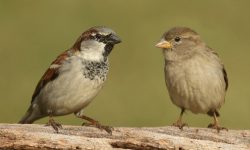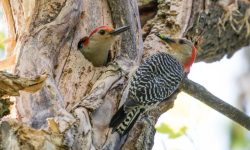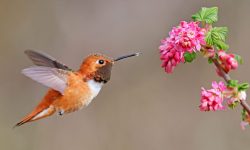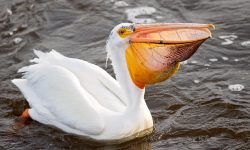Loons are expert divers, famed for their eerie calls and striking black-and-white plumage. But beneath the surface, they are also skilled aquatic predators. This article explores what loons like to eat most, how their diet changes throughout the seasons, and what makes them such effective hunters.
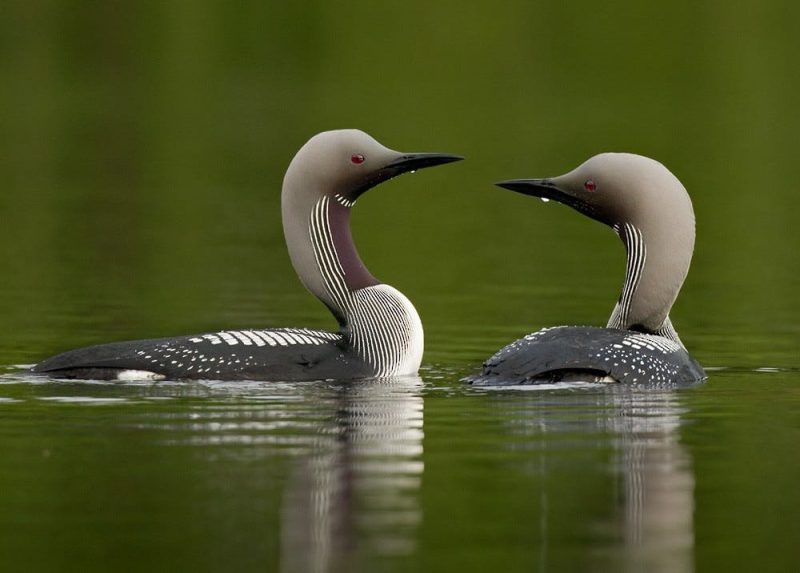
Primary Diet: Fish
Fish as the Core Nutritional Foundation
Loons are obligate piscivores, meaning that fish form the overwhelming majority of their diet. Studies across their breeding and wintering ranges consistently show that over 80% of a loon’s caloric intake comes from fish, with some individuals consuming up to 500 grams (over 1 pound) of fish per day, depending on species and energy demands. This fish-centric diet fuels their powerful diving ability, high metabolism, and long migratory flights.
Loons favor soft-bodied, fusiform (streamlined) fish that are easy to capture and swallow whole. The fish must fit within the dimensions of their slender esophagus and be digestible without needing to be dismembered.
Common Prey Species
The specific fish species loons target vary by region, habitat type, and season, but commonly include:
-
Yellow perch (Perca flavescens): A staple prey in North American freshwater lakes, offering high protein content.
-
Sunfish (Lepomis spp.): Such as bluegill and pumpkinseed, these are abundant and slow-swimming, making them ideal for capture.
-
Minnows (Cyprinidae): Small, agile fish that form dense schools near the water surface or in shallow areas.
-
Rainbow smelt (Osmerus mordax): A key prey item in colder northern lakes and coastal waters.
-
Shad (Alosa spp.): Consumed in estuarine or brackish waters, especially during wintering periods.
-
White suckers (Catostomus commersonii): Bottom-feeding fish often taken during benthic foraging dives.
-
Juvenile salmon and trout (Oncorhynchus spp., Salmo spp.): Targeted in cold, oxygen-rich waters, especially by loons in the Pacific Northwest and Canada.
Underwater Pursuit and Capture Techniques
Loons are visual hunters, relying on exceptionally keen underwater eyesight to detect and track moving prey. Their eyes are capable of adjusting refractive focus between air and water environments, allowing precise targeting at variable depths and lighting conditions.
Once prey is spotted, the loon initiates a dive by compressing its body, thrusting forward with its powerful posterior-placed legs, which act like natural flippers. Unlike ducks, loons do not use their wings to propel underwater. Their dense, solid bones—unusual among birds—reduce buoyancy, making deep dives more efficient.
A typical foraging dive lasts 30 to 60 seconds, although loons can remain submerged for up to three minutes and may reach depths exceeding 60 meters (200 feet) in pursuit of fish. Most prey is captured mid-water or near the bottom, and then swallowed headfirst to avoid fin spines causing internal injury.
Secondary Foods: Invertebrates and Amphibians
Crustaceans and Aquatic Insects as Supplemental Nutrition
Though loons are primarily fish-eaters, they exhibit opportunistic feeding behavior, particularly when fish populations are reduced due to seasonal fluctuations, water temperature changes, or habitat disruption. In such cases, loons shift their foraging efforts to a diverse array of aquatic invertebrates, which serve as a vital protein source—especially for chicks and juveniles in their early developmental stages.
Key invertebrate prey includes:
-
Crayfish (Cambaridae): Loons use their sharp bills to grasp and subdue these armored crustaceans, often shaking or manipulating them to break off claws before swallowing.
-
Freshwater shrimp (e.g., Mysis spp.): These small, energy-rich crustaceans are abundant in deeper lakes and provide easy-to-capture meals.
-
Dragonfly and mayfly larvae (Odonata and Ephemeroptera): Found clinging to submerged vegetation or benthic substrates, these soft-bodied larvae are an ideal food for young loons transitioning from parental feeding to self-foraging.
-
Water beetles (Dytiscidae): Agile swimmers that loons pursue actively during shallow dives.
-
Leeches (Hirudinea): Though not a preferred food, leeches may be consumed incidentally or as part of bottom-sifting foraging behavior.
These prey types are especially important during the chick-rearing period, as adult loons selectively gather easier-to-digest, protein-dense organisms that support rapid skeletal and muscular growth in their offspring. Juvenile loons rely on these soft-bodied animals before their hunting abilities and digestive systems can handle live fish.
Amphibians and Rare Dietary Additions
In addition to invertebrates, loons may occasionally consume small amphibians and other aquatic fauna, particularly in shallow, vegetated wetlands or lakes with reduced fish biomass.
Occasional prey includes:
-
Small frogs and tadpoles (Anura): Easily captured during shoreline foraging, especially in spring and early summer when amphibian breeding is at its peak.
-
Aquatic snails and mollusks: While uncommon in their diet, loons may consume soft-bodied gastropods incidentally or during exploratory bottom dives. These items contribute trace minerals and calcium, which may be especially important during egg formation or growth phases.
These non-fish prey sources reveal the loon’s ecological plasticity—its ability to exploit different food resources in response to environmental variability. Such flexibility is crucial to their survival in seasonally dynamic ecosystems, where food abundance and type can change drastically within weeks.
What Do Loon Chicks Eat?
Early Life Feeding and Parental Provisioning
In the days immediately following hatching, loon chicks are entirely dependent on their parents for food. These downy, semi-precocial young are able to swim within 24 hours of birth, but their diving abilities are limited to brief submersions near the water surface. Their lightweight bodies, underdeveloped musculature, and lack of feather waterproofing prevent deep dives and sustained hunting.
To meet their nutritional needs, adult loons deliver frequent meals directly to the chicks’ beaks. Early food items are carefully selected for ease of swallowing and digestion, and typically include:
-
Tiny minnows (Cyprinidae and other small forage fish): Offered headfirst to reduce choking risk, these small fish provide essential proteins and fatty acids for rapid tissue development.
-
Soft-bodied aquatic insects: Such as midge larvae and mayfly nymphs, which are rich in amino acids and easy to digest.
-
Juvenile crustaceans: Including freshwater shrimp or very small crayfish, which contribute minerals like calcium and phosphorus vital for early bone growth.
During this period, frequent feedings—up to several per hour—are essential for maintaining the chick’s high metabolic demands and supporting early development of muscle coordination, thermoregulation, and feather growth.
Transition to Independent Foraging
By the time chicks reach 2 to 3 weeks of age, their diving abilities improve markedly. They begin practicing short, shallow dives, often in calm bays or weedy shallows where prey density is high and water visibility is good. Although still reliant on their parents for much of their sustenance, chicks start:
-
Capturing small fish on their own, including shiners, sticklebacks, or juvenile perch.
-
Foraging near the surface for insects and zooplankton using pecking and short lunges.
Parental feeding does not cease immediately. In colder lakes, where thermoclines or turbidity can obscure prey, or during poor weather conditions, adults continue to supplement the chicks’ meals well into their fifth or sixth week. This parental investment enhances survival odds, especially for late-season broods facing shortened growing periods before fall migration.
By 6 to 8 weeks, most loon chicks are capable of capturing their own prey efficiently. However, they may remain with their parents until full fledging—often between 10 and 12 weeks—benefiting from protection and occasional feedings until they can independently navigate the challenges of open-water hunting.
Seasonal and Habitat-Based Dietary Changes
Breeding Season in Freshwater Lakes
During the spring and summer breeding season, loons inhabit northern freshwater lakes and large ponds—especially those with clear water, abundant fish populations, and quiet shorelines. These still or slow-moving bodies of water are ideal for their visual-based hunting strategy, which relies on exceptional underwater clarity.
In this environment, loons feed primarily on:
-
Small to medium-sized freshwater fish, such as yellow perch, sunfish, and minnows
-
Aquatic insect larvae, including dragonflies, midges, and caddisflies
-
Juvenile amphibians and occasional crayfish in nutrient-rich shallows
The transparent nature of northern lakes allows loons to pursue prey at varying depths—often diving 1 to 5 meters below the surface, though they are capable of much deeper descents. During this season, loons also meet the high energy demands of courtship, territorial defense, nesting, and chick-rearing, making protein-rich fish especially vital.
Winter Diet in Marine and Coastal Habitats
As autumn approaches and freshwater lakes begin to freeze, loons undertake long-distance migrations to coastal estuaries, sheltered bays, and offshore marine waters, particularly along the Atlantic and Pacific coasts of North America.
In these saltwater environments, their diet shifts significantly, reflecting the available marine fauna. Common winter prey includes:
-
Herring (Clupea spp.): A calorie-dense schooling fish often hunted in coastal shallows
-
Mummichogs (Fundulus heteroclitus): Hardy killifish commonly found in tidal estuaries
-
Sand lance (Ammodytes spp.): Slender, burrowing fish rich in lipids, ideal for overwintering energy needs
-
Marine crustaceans, such as shrimp, amphipods, and juvenile crabs
Loons exhibit remarkable physiological and behavioral plasticity, adjusting seamlessly to saline environments and new prey types. They continue to rely on their strong legs and webbed feet for propulsion, while their dense bones aid in maintaining neutral buoyancy for precise underwater maneuvering. Though visibility may be lower in turbid coastal waters, loons compensate with acute vision and targeted dives timed to follow prey schools or tidal flows.
This seasonal dietary flexibility ensures loons can thrive year-round across vastly different ecosystems—from glassy northern lakes to wind-tossed ocean inlets—highlighting their adaptability and ecological resilience.
How Loons Hunt Their Prey
Underwater Pursuit Specialists
Loons are exceptional underwater predators, uniquely adapted for life beneath the surface. Unlike wading birds such as herons or egrets that strike prey from above, loons hunt entirely submerged, pursuing live prey with precision and power. Their bones are unusually dense compared to other birds, which reduces buoyancy and allows them to dive effortlessly—sinking beneath the surface with barely a ripple.
They propel themselves using their large, webbed feet, which are located far back on their streamlined bodies. This rear-foot placement creates powerful thrust but limits their ability to walk on land, reinforcing their evolutionary specialization for aquatic life. Loons tuck their wings tightly against their bodies while swimming, minimizing drag and allowing for swift, agile maneuvers through complex underwater environments.
Precision Capture and Consumption
Once a loon spots its target—often from above the water or mid-dive—it uses binocular vision and nictitating membranes (a transparent third eyelid) to track the prey even in dim or murky conditions. Loons can dive to depths exceeding 60 meters (200 feet), though most hunting occurs between 1 and 5 meters, where prey fish are more abundant.
Instead of spearing prey like some seabirds, loons snap up fish with a sudden sideways or forward lunge of their sharp, dagger-like bill. Their preferred method is to catch fish headfirst, a strategy that helps prevent sharp fins or spines from catching in the throat as the prey is swallowed whole.
Most prey is consumed while still underwater, especially smaller fish. For larger or slippery catches, loons may surface briefly to reposition or manipulate the prey before swallowing it. Their esophagus is adapted to expand and flex, allowing them to ingest surprisingly large prey relative to their size.
Stealth and Strategy
Loons often use stealth and patience, diving silently and surfacing yards away from their original location to avoid alarming fish. In shallow waters, they may hover close to the bottom, waiting for fish to pass overhead. In deeper zones, they chase schools or ambush lone prey hiding in vegetation or near the substrate.
This hunting efficiency is essential for survival, particularly in cold northern lakes where prey density fluctuates seasonally and dive endurance can determine reproductive success.
Importance of Diet in Loon Survival
Meeting Extreme Energy Demands
Loons are high-performance predators with exceptionally demanding metabolisms. An adult Common Loon (Gavia immer), for instance, may consume up to two pounds (approximately 900 grams) of fish per day, depending on activity level, water temperature, and prey availability. This caloric intake is vital for fueling:
-
Endurance diving, often repeated dozens of times per hour
-
Long migratory flights, sometimes spanning hundreds of miles between breeding and wintering grounds
-
Chick-rearing, which requires feeding fast-growing nestlings multiple times an hour
During the breeding season, energy demands peak. Both parents must not only sustain themselves but also provide enough protein-rich food for their chicks to grow feathers, develop muscle mass, and learn to dive. In years when fish populations are low or water clarity declines, chick survival rates plummet.
In migration, loons undergo hyperphagia, a period of excessive feeding to build fat reserves. These fat stores act as fuel for long, nonstop flights—especially for species crossing open water bodies like the Great Lakes or the Gulf of Mexico. Any disruption in food supply during this phase can delay or derail successful migration.
Environmental Sensitivity and Conservation Concerns
Because loons are obligate fish-eaters and visual hunters, their survival is closely tied to the health and clarity of aquatic ecosystems. Even subtle ecological disruptions can have cascading effects on their diet and, by extension, their population viability.
Major environmental threats include:
-
Pollution: Loons ingest toxic compounds such as methylmercury or lead by consuming contaminated fish. Mercury bioaccumulates in aquatic food chains and can impair neurological development in chicks, reduce adult reproductive success, or cause death in high doses.
-
Overfishing: Human harvests of game fish like perch or trout may reduce prey availability in key breeding habitats.
-
Habitat Degradation: Shoreline development, acid rain, eutrophication, and water traffic all influence water quality and prey accessibility.
-
Climate Change: Altered precipitation patterns and warming lakes can shift fish distributions or timing of insect hatches, desynchronizing loon breeding cycles from peak food availability.
In this way, loons function as bioindicators—species whose health reflects broader ecosystem integrity. Ensuring they have clean, prey-rich waters is not only vital for their survival but also for the preservation of freshwater biodiversity as a whole.
Conclusion
So, what do loons like to eat the most? Fish, by far, are their favorite and most essential food, especially small, soft-bodied species that are easy to catch and swallow. However, loons are also capable of adjusting their diet to include crustaceans, aquatic insects, and even frogs when necessary.
Whether patrolling a glassy northern lake or diving through coastal surf, the loon’s feeding habits showcase a remarkable combination of specialization and adaptability—a true symbol of aquatic mastery.

